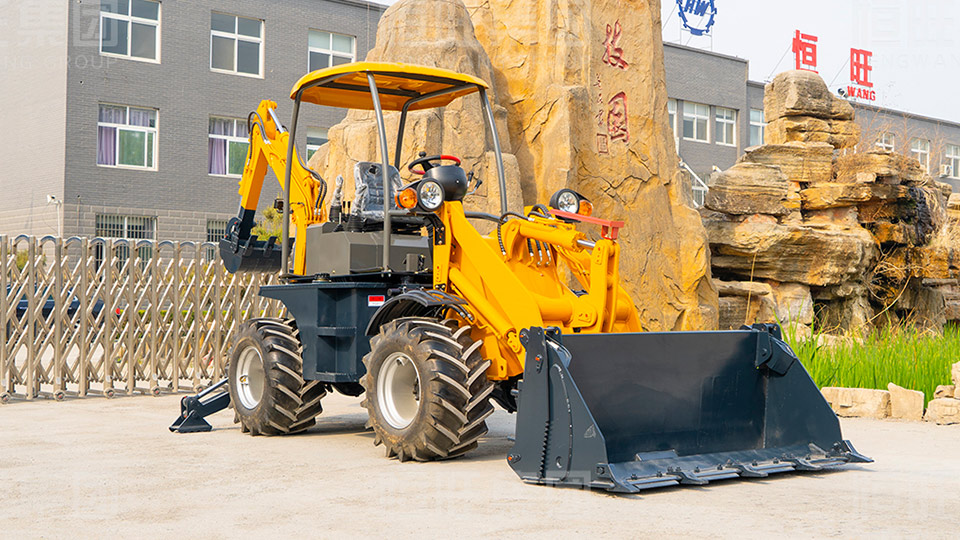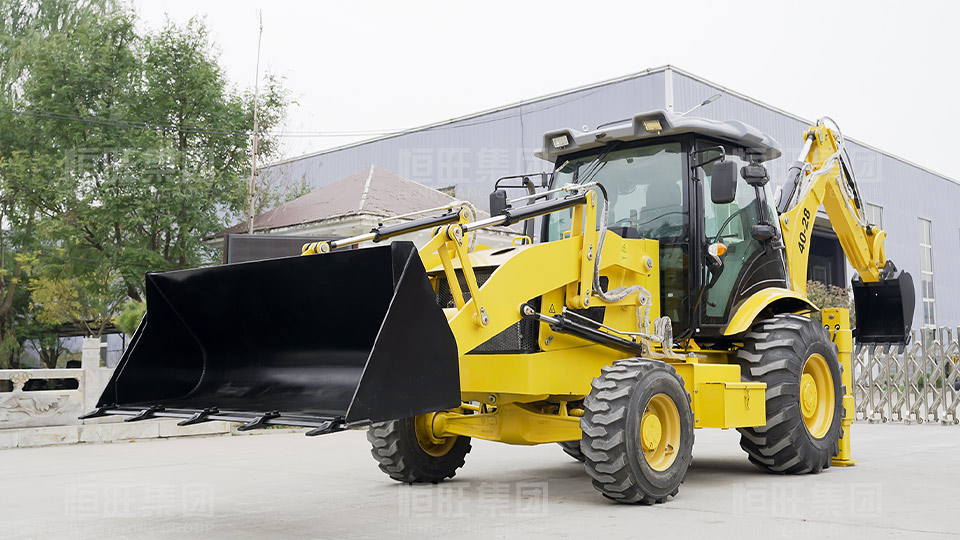In the highly competitive field of construction machinery, the backhoe loader, with its "multi-functional" characteristics, has become a core equipment in scenarios such as earthwork projects and municipal construction. For engineering practitioners, mastering the core elements of backhoe loader purchase is crucial for achieving efficient construction and cost control. This article will provide you with a professional decision-making guide for backhoe loader purchase from three dimensions: machine type classification, application scenarios, and core parameter configurations.
I. Main Types of Backhoe Loaders: The Foundation for Model Selection Based on Needs
Standard Backhoe Loaders
As the mainstream in the market, standard backhoe loaders are "all-rounders" for conventional earthwork operations. Equipped with a standard 20 - 25-ton chassis and a bucket capacity of 0.8 - 1.5m³, and combined with attachments such as hydraulic breakers, they can flexibly handle tasks like ordinary earthwork excavation and road trimming, meeting the backhoe loader purchase needs of small and medium-sized projects.
Heavy-duty Backhoe Loaders
Facing high-load working conditions such as rock breaking and mining in large-scale infrastructure projects, heavy-duty backhoe loaders stand out with a power output of over 150kW and reinforced working devices. These machines are specifically designed for heavy loads and are the preferred models when large-scale projects purchase backhoe loaders.
Compact Backhoe Loaders
In space-constrained scenarios such as garden engineering and indoor demolition, compact backhoe loaders with a turning radius of less than 5 meters serve as "agile pioneers". These models can operate freely in complex environments such as narrow alleys and urban blocks, providing precise solutions for backhoe loader purchase in specific scenarios.
II. Analysis of Typical Application Scenarios: Adaptability to Working Conditions is the Core
Infrastructure Construction
In infrastructure projects such as road widening and pipeline laying, the integrated excavation and loading functions of backhoe loaders can significantly increase construction efficiency by 40%. When purchasing, it is necessary to pay attention to parameters such as the excavation depth and loading height of the equipment to ensure that they meet the actual project requirements and maximize the benefits of backhoe loader purchase.
Real Estate Development
In the foundation pit excavation and material handling links of real estate projects, backhoe loaders equipped with tilting cargo boxes can greatly shorten the construction period. Such equipment has obvious advantages in earthwork transportation efficiency and is a key configuration to consider when purchasing backhoe loaders for real estate projects.
Agriculture and Forestry
For special scenarios such as wetland operations in agriculture and mountain construction in forestry, backhoe loaders equipped with pontoon tracks or special mountain chassis can effectively handle muddy and rugged terrains. Selecting suitable models according to specific working conditions is the key principle for backhoe loader purchase in special fields.

III. Interpretation of Key Technical Parameters: Performance Determines Value
Engine Performance
As the "heart" of the backhoe loader, it is recommended to give priority to turbocharged diesel engines, which can significantly reduce fuel consumption costs with a thermal efficiency of ≥40%. At the same time, models that meet the National IV emission standards are not only environmentally compliant but also the current mainstream choice for backhoe loader purchase.
Hydraulic System
Advanced load-sensitive hydraulic systems can reduce fuel consumption by 15%, and electronically controlled multi-way valves greatly improve operation accuracy. During the process of backhoe loader purchase, examining the response speed and stability of the hydraulic system is an important indicator to ensure efficient operation of the equipment.
Service Life of Working Devices
Equipment with booms and buckets cast from high manganese steel can have a service life of up to 8,000 hours under normal working conditions. High-quality materials and craftsmanship of working devices are directly related to the durability of the equipment and subsequent maintenance costs, and are parameters that cannot be ignored during backhoe loader purchase.
IV. Purchase Strategy Recommendations: Guarantee for Rational Decision-making
Budget Planning
Select equipment with appropriate horsepower according to actual working conditions. The investment payback period for medium and large-sized backhoe loaders is usually 2 - 3 years. When formulating a budget, it is necessary to comprehensively consider factors such as equipment purchase costs, fuel consumption, and maintenance expenses to ensure the economic viability of the backhoe loader purchase plan.
Test Drive Verification
Field test drives are a crucial part before backhoe loader purchase. Focus on testing the steering flexibility and braking stability of the equipment, and monitor the hydraulic oil temperature changes during continuous operation to avoid potential performance risks.
Aftermarket Support
The timeliness of a manufacturer's spare parts supply and the coverage rate of certified maintenance outlets (recommended to be no less than 85%) directly affect the equipment downtime and maintenance costs. A complete aftermarket service system is an important plus factor in the decision-making process of backhoe loader purchase.
V. Industry Trends and Decision-making Reminders: The Key to Forward-looking Layout
Currently, intelligent backhoe loaders equipped with autonomous driving assistance systems are leading the industry transformation. Although the prices of these high-end models are 30% - 40% higher than those of traditional models, their improvements in construction accuracy, safety, and efficiency are significant. It is recommended that before backhoe loader purchase, conduct at least three months of simulated working condition tests, focusing on evaluating the equipment's reliability performance under extreme temperatures and complex terrains to ensure the long-term realization of investment value.

